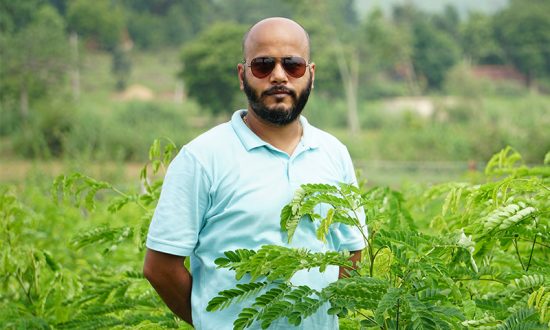Bikrant Tiwary, an alumnus of IIM Calcutta and a Master’s in commerce from Ranchi University, has over 20 years of diverse experience in insurance, media, and social sector. His exposure to the certificate program of Harvard Business School gave him a new vision to the business. He has been a winner of Silicon Valley Fellowship organized by AFI and has also been nominated by U.S. Consulate General Mumbai for their EcoHeroes campaign. Bikrant is the first CEO of Grow-Trees.com and the former National Head of GiveIndia, the largest philanthropic online platform. He had left his corporate career in 2010 with a passion to bring positive social changes to society.
The pandemic affected the lives of many people brutally. However, if there’s one thing that we learned from this ghastly situation, it’s that the environment flourishes splendidly in the absence of human activity.
The effects of the lockdown were made apparent by blue skies, cleaner air, and the return of wildlife to their natural habitats. We will be able to witness and preserve the beauty of our unparalleled biodiversity only if we work towards environmental health diligently.
We might have considered human health and the environment as two independent entities. The pandemic, on the other hand, was effective in demonstrating that human health is directly proportional to environmental health. Because of numerous causes such as urbanization, irresponsible consumption and production, and reckless deforestation practices, the distance between people and the environment appears to be widening at an alarming rate.
According to a major report released in November 2020 by IPBES, the Intergovernmental Science-Policy Platform on Biodiversity and Ecosystem Services, the exponential rise in consumption, trade, and population pressure has increased the risk of pandemics, with more than five new diseases emerging in people every year. Dr. Peter Daszak from IPBES says that “There is no great mystery about the cause of the Covid-19 pandemic, or of any modern pandemic. The same human activities that drive climate change and biodiversity loss also drive pandemic risk through their impacts on our environment.”
The science community has been trying to draw attention to the increased risk of a viral pandemic and climate change. Despite repeated warnings, we have failed to understand the importance of mindful and sustainable habits that can mitigate the effect of rampant human activity. If our current rate of greenhouse gas emissions does not improve, we might fail to achieve our 1.5˚C target and head towards a 3-4˚C rise in temperature instead.
While we are all trying to achieve a safe recovery from the pandemic, it is also important to ensure a sustainable recovery. The aftermath of COVID-19 has made us realize the importance of practicing and encouraging habits that can benefit the environment for years to come. This is why we encourage people to accept ‘Greet with Trees’ as their motto. One tree planted today is expected to sequester approximately 1 ton of atmospheric carbon upon maturity.
Together, we can bring a positive and long-lasting change in the environmental condition. The unprecedented horrors of the pandemic saw many people coming together to help the ill and downtrodden. People realized that the only way to fight the COVID-19 virus is by collectively understanding the need to practice and implement measures and strategies that can help us recover from the pandemic rapidly. A new way of life was accepted as the “new normal”, reminding us that human resilience can do wonders.
As human activities and climate change continue to advance, our resilience will certainly be put to test time and again. Thus, it is important to understand that our combined efforts in tackling climate change can bring about a better and significant improvement in the environmental condition. Individuals and large corporations both need to be cognizant of the magnitude of damage caused by reckless activities and take adequate measures to move towards a healthier and sustainable lifestyle.
For instance, expensive and extravagant gifts can be replaced with trees or sustainable options that do not pose a threat to the environment. Reducing paper waste, allowing telecommuting, organizing plantation drives for employees, or switching to energy-efficient appliances are also a few ways organizations can contribute towards making a positive change on the environment.
The pandemic also saw digitization taking the country by storm. Most of the businesses were either forced to shut down or go completely digital with their operations. Schools and events also switched to virtual platforms to save us from the enormity of the pandemic. Grow-Trees.com was also established to provide users with a cost-effective web-enabled service. You can plant a tree and locate it using the ‘Locate Tree’ feature on our website from the comfort of your homes. The tree you plant not only offsets your daily carbon footprint but also creates employment for rural communities and helps in conserving the environment and wildlife.
We’ve all heard about the significance of trees and maintaining a healthy ecosystem. However, somewhere along the line, we appear to have prioritized urbanization and progress over environmental health, overlooking the fact that the two must coexist. The plantation of trees not only provides a range of environmental advantages but also preserves the history and culture of rural and tribal people that regard trees as sacred.
The pandemic taught us a great deal about the connection between the environment and human health. We must make deliberate efforts to bring about long-term improvements in the environment so that we are not reminded of the consequences of an insensitive attitude to the environment by another pandemic.


